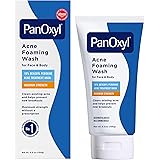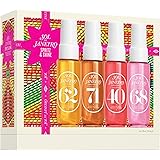That feeling of feigning satisfaction over an expensive, regrettable fragrance purchase, perhaps one described as a “smoky nut smelling” disaster, is an experience many perfume enthusiasts can relate to, as humorously highlighted in the video above. The allure of a tempting deal or widespread hype often leads us to commit to a blind buy fragrance, a purchase made without actually smelling the scent beforehand. However, the disappointment that follows a poor choice can be significant, especially when a substantial amount, like $200, is involved.
Avoiding the frustration and financial drain of a bad fragrance blind buy is entirely possible with a more informed approach. This guide is designed to help navigate the exciting yet often risky world of fragrance purchasing, ensuring that your next scent acquisition brings genuine delight rather than buyer’s remorse. Thoughtful consideration and strategic testing are key to building a collection that truly reflects your taste and personality.
Understanding the Allure and Risks of a Fragrance Blind Buy
A fragrance blind buy occurs when a bottle of perfume or cologne is purchased solely based on online reviews, recommendations, or a description of its notes, without ever having smelled it. This practice has become increasingly common, driven by enticing sales, limited editions, and the sheer excitement of discovering something new. Many are drawn to the thrill of the chase, hoping to unearth a hidden gem at a bargain price.
However, the risks associated with this method are considerable. Firstly, there is the obvious financial aspect; an unsuitable fragrance often means wasted money, as was indicated in the video. Unlike clothing or electronics, a fragrance cannot typically be returned once opened, making careful decision-making even more crucial. Secondly, the subjective nature of scent means that what one person finds appealing, another might find off-putting. The intricate blend of notes can react uniquely with individual skin chemistry, leading to vastly different experiences than anticipated. A fragrance that smells incredible on a test strip might be disappointing when worn on your skin throughout the day.
Why Do People Still Blind Buy Fragrances?
Despite the inherent risks, the phenomenon of the fragrance blind buy persists. Several factors contribute to its popularity. Often, a compelling narrative or a limited-time offer can create a sense of urgency, pressuring consumers into quick decisions. Enthusiastic reviews from trusted sources, or even social media influencers, frequently sway purchasing choices, painting a picture of an irresistible scent. Furthermore, the sheer inaccessibility of certain niche or international brands makes physical testing difficult, if not impossible, for many. This leaves a blind purchase as the only pathway to experience these unique aromas. The thrill of the unknown and the hope of discovering a new signature scent can be powerful motivators.
Decoding Fragrance: Notes, Families, and Longevity
To truly avoid a bad blind buy fragrance, a foundational understanding of how scents are composed is essential. Fragrances are intricate mixtures of various aromatic compounds, typically categorized into ‘notes’ and ‘families.’ These elements combine to create a complete scent profile that evolves over time on the skin.
The Architecture of Scent: Top, Middle, and Base Notes
A fragrance’s journey is often described in three stages, known as its notes: top, middle (or heart), and base notes. These layers are designed to unfold sequentially, creating a dynamic olfactory experience.
-
Top Notes: These are the initial scents detected immediately upon application. They are usually light, fresh, and volatile, evaporating quickly. Common top notes include citrus (lemon, bergamot), herbs (lavender), and light fruits. They create the first impression and are crucial for the initial appeal of a scent.
-
Middle Notes (Heart Notes): As the top notes fade, the middle notes emerge, forming the core of the fragrance. These are often softer and more rounded, typically consisting of floral (rose, jasmine), spicy (cinnamon, nutmeg), or green notes. They contribute significantly to the overall character and personality of the perfume or cologne.
-
Base Notes: These are the longest-lasting and heaviest components of the fragrance, appearing as the middle notes begin to disappear. Base notes often include rich, deep aromas like woods (sandalwood, cedar), resins (amber, frankincense), musks, and vanilla. They provide depth, longevity, and act as a fixative, anchoring the lighter notes and leaving a lasting impression.
Exploring Fragrance Families
Fragrances are broadly classified into families, which help categorize scents based on their dominant characteristics. Understanding these families can guide your preferences and help predict whether a new scent will appeal to you.
-
Floral: Dominated by the scent of various flowers, ranging from single floral notes to complex bouquets. These are often perceived as romantic and feminine, though floral notes are increasingly found in unisex and masculine scents.
-
Oriental (Amber): Rich, warm, and often spicy, with notes like vanilla, amber, frankincense, and exotic spices. These fragrances are typically perceived as luxurious and sophisticated, ideal for evening wear.
-
Woody: Characterized by notes of cedar, sandalwood, vetiver, and patchouli. These scents are often earthy, warm, and elegant, commonly associated with masculine fragrances but also popular in unisex and some feminine blends.
-
Fresh: Encompassing crisp, clean, and often invigorating scents. This family includes subcategories like citrus (lemon, bergamot), green (cut grass, leaves), and aquatic (sea breeze, fresh air). These are popular for daytime wear and warmer climates.
-
Fougère: A classic masculine family, often featuring notes of lavender, coumarin (tonka bean), oakmoss, and geranium. These scents are typically herbaceous, earthy, and fresh, providing a barbershop-like aroma.
-
Chypre: Characterized by a distinctive accord of bergamot, oakmoss, and labdanum. Chypre fragrances are often sophisticated, earthy, and warm, with a timeless elegance.
-
Gourmand: Featuring edible or dessert-like notes such as vanilla, caramel, chocolate, and coffee. These are often comforting, warm, and sweet, evoking a sense of deliciousness.
Longevity and Sillage
Beyond the scent itself, two crucial factors influence the wearing experience: longevity and sillage. Longevity refers to how long a fragrance lasts on the skin, which can vary significantly depending on its concentration (e.g., Eau de Cologne, Eau de Toilette, Eau de Parfum, Extrait de Parfum) and the individual’s skin chemistry. Sillage (pronounced “see-yahzh”) describes the trail or aura a fragrance leaves behind as the wearer moves. A scent with strong sillage will be noticeable to others from a distance, while one with weak sillage stays closer to the skin. These attributes are often mentioned in reviews and can be considered when attempting to avoid a frustrating blind buy fragrance experience.
Strategies for Smart Fragrance Purchasing: Avoiding Regret
Making informed choices is paramount when building a fragrance collection, especially if the goal is to prevent the disappointment that often accompanies a poor fragrance blind buy. A methodical approach, prioritizing experience over impulse, can save both money and heartache. Several proven strategies can be employed to ensure that each new scent acquired is a genuine delight.
The Power of Sampling and Decants
The most effective way to circumvent a bad blind buy fragrance is through extensive sampling. This allows for a proper evaluation of how a scent develops and performs on your skin throughout the day. Many retailers and independent sellers offer small vials, known as ‘decants,’ which contain a few milliliters of a fragrance. These are typically sufficient for several wearings, providing ample opportunity to test a scent’s longevity, sillage, and how its notes evolve on your unique skin chemistry.
Discovery sets, often curated by specific brands, also present an excellent opportunity. These sets usually include multiple mini versions of a brand’s popular offerings, allowing for exploration of a range of their creations. While a small investment may be required for samples or discovery sets, this cost is minimal when compared to the price of a full bottle that might ultimately be disliked. This cautious approach ensures that any full bottle purchase is made with confidence.
In-Store Testing: A Hands-On Approach
When possible, visiting a physical store provides an invaluable opportunity to test fragrances in person. However, it is important to test wisely to avoid olfactory fatigue. When sampling in a store, it is recommended to spray a fragrance on a blotter strip first to get an initial impression of the top notes. If it seems promising, a small amount should then be applied to your skin, ideally on pulse points like the wrist or inner elbow, away from other scents. Avoid rubbing the wrists together, as this can ‘crush’ the fragrance molecules and alter the development of the scent.
It is generally advised not to test more than 3-4 fragrances on your skin at one time. Allowing ample time for the scent to develop on your skin, perhaps by walking around for an hour or two before making a decision, is also critical. A good practice is to return to the store on a different day to re-test the contenders, ensuring that your initial positive impression holds up over time and in varying conditions. This patient methodology significantly reduces the likelihood of a regrettable blind buy fragrance.
Leveraging Online Resources and Reviews
Before even considering a sample or an in-store test, comprehensive research can save a considerable amount of time. Websites dedicated to fragrance, such as Fragrantica or Basenotes, offer extensive databases with detailed information on notes, fragrance families, and user reviews. These platforms can provide insights into a scent’s general profile, its performance characteristics, and common comparisons to other known fragrances.
However, it is important to remember that reviews are subjective and should be taken with a grain of salt. Look for patterns in feedback: if multiple reviewers mention a specific note or characteristic, it is likely to be prominent. Pay attention to descriptions that align with scents you already enjoy or dislike. YouTube channels and blogs specializing in fragrance reviews can also offer valuable perspectives, often including discussions on when and where a fragrance might be best worn. This preliminary research builds a knowledge base that makes subsequent testing more efficient and informed.
Considering Skin Chemistry and Personal Preference
One of the most crucial, yet often overlooked, aspects of fragrance selection is individual skin chemistry. How a perfume interacts with your skin’s natural oils, pH, and temperature can dramatically alter its scent profile. A fragrance that smells incredible on a friend or on a test strip might transform into something entirely different on your skin. This is why a personal trial is always superior to a blind buy fragrance. Additionally, factors like diet, medication, and even stress can influence skin chemistry and, consequently, how a fragrance is perceived.
Ultimately, personal preference is the deciding factor. While a fragrance might be universally acclaimed, if it does not resonate with your personal taste or align with your lifestyle, it will likely remain unused. It is important to trust your own nose and choose scents that genuinely make you feel good and confident, rather than succumbing to hype or trends. Developing an understanding of what notes and families you are drawn to will greatly inform future purchases, ensuring that each addition to your collection is cherished.
Navigating the Aftermath: What to Do with a Regrettable Blind Buy
Even with the most careful planning, a truly unsuitable blind buy fragrance can occasionally find its way into your collection. The video’s depiction of pretending a “smoky nut smelling fragrance” is good, simply because “I can’t waste $200,” resonates with many who have faced this dilemma. However, an unwanted fragrance does not have to be a permanent fixture or a complete financial loss. Several avenues can be explored to mitigate the regret and perhaps even recoup some of the cost.
Reselling and Swapping Platforms
The secondary market for fragrances is quite active and offers a viable solution for offloading unwanted bottles. Online communities and dedicated platforms, such as Facebook fragrance groups, Reddit’s /r/fragranceswap, or sites like Mercari and eBay, are popular places for buying, selling, and swapping perfumes and colognes. When listing a fragrance, it is important to be transparent about its condition, fill level, and whether it has its original box. Clear, well-lit photos can also significantly enhance a listing’s appeal. Pricing should be fair, taking into account the fragrance’s retail value, its current demand, and how much has been used.
Swapping fragrances with other enthusiasts can also be a mutually beneficial option. This allows both parties to exchange unwanted scents for something new to try, effectively expanding their collections without additional financial outlay. Participation in these communities can also lead to discovering new favorites through recommendations and shared experiences, turning a negative fragrance blind buy into an opportunity for connection and discovery.
Gifting or Donating Unwanted Scents
If reselling proves too cumbersome or if the financial recovery is not the primary concern, gifting an unwanted fragrance can be a thoughtful gesture. A scent that did not work for you might be perfect for a friend, family member, or colleague whose taste aligns with its profile. It is important to ensure that the recipient genuinely appreciates the fragrance, thereby giving it a new home where it will be enjoyed. Similarly, some charitable organizations accept donations of new or gently used toiletries, including fragrances. This provides an ethical way to ensure that a once-regrettable purchase can still bring some benefit.











